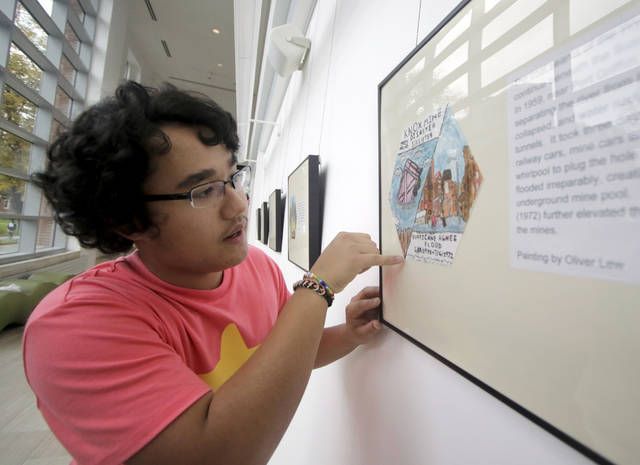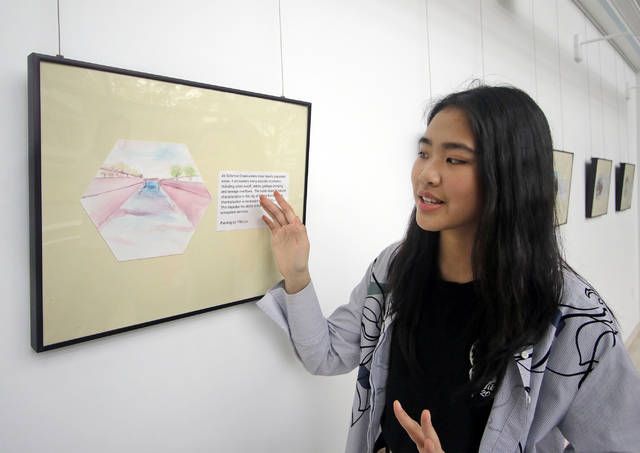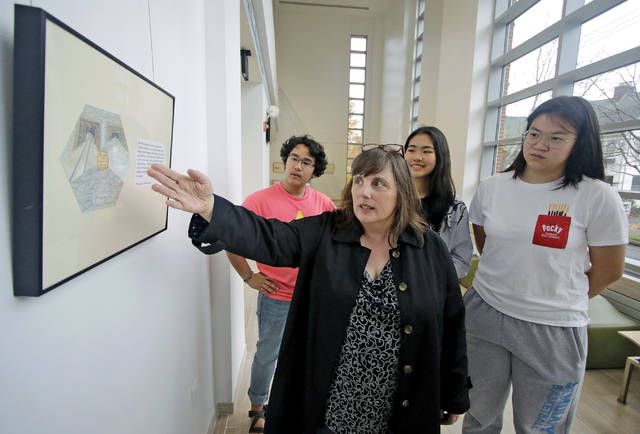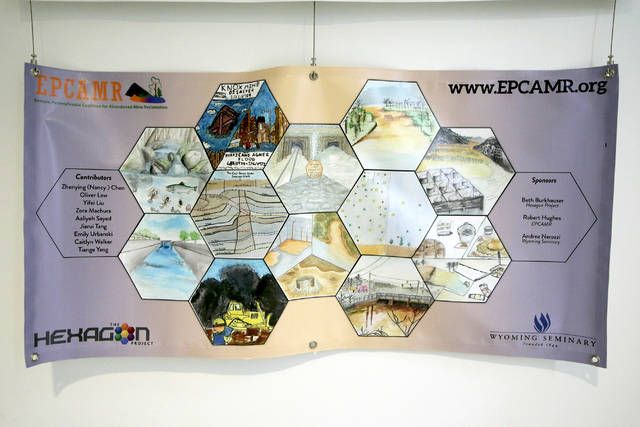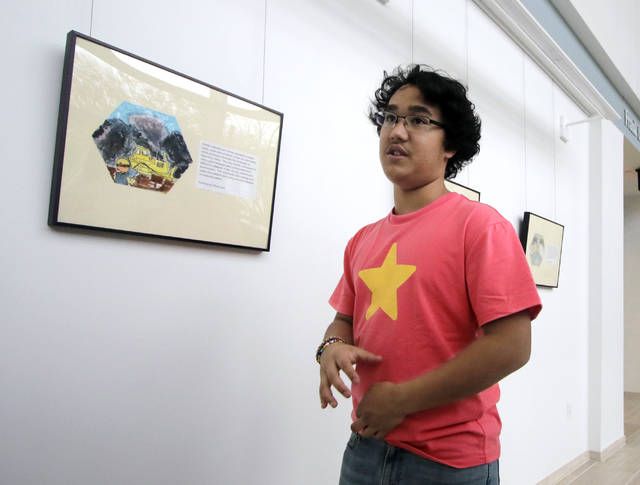Click here to subscribe today or Login.
The first illustrated panel in the “STEM and Art” project, one that Emily Urbanski from Mountain Top drew, shows a rainbow trout, a crayfish, an aquatic worm and smaller creatures swimming in a crystal blue waterway.
It looks like the kind of place you might enjoy fishing, or wading, or just relaxing under the riparian border of trees.
But it’s an artist’s idea of what a healthy, unspoiled Northeastern Pennsylvania creek was like before it became polluted with acid mine drainage.
What are parts of the Solomon Creek watershed like nowadays?
“It smelled like a skunk,” said Oliver Lee, 17, of Dallas, who visited the creek and some of its tributaries on field trips with other science students from Wyoming Seminary.
“It smelled like rotten eggs,” confirmed Tiange “T” Tang, 16, a Wyoming Seminary student who hails from Shanghai.
That was just the aroma. The students also returned from a visit to Hanover Township with memories of creek water stained orange by heavy iron oxide content — and they wanted to do something about it, starting with spreading the word.
So they created an illustrated project that tells the story of local mining, including the Knox Mine Disaster, the Agnes Flood, pollution and recovery efforts. They call it “Stem and Art: Changing Perspectives of Waterways.”
Each panel is shaped like a hexagon, which was a criterion for the artwork to be part of the Interdependence Hexagon Project, a Scranton-based art and social justice initiative that uses hexagons as “a metaphor for how we’re all connected.”
“It was just beautiful,” Hexagon Project founder and retired art instructor Beth Burkhauser described their work.
“Every year we give a special award to people who partner with another group, and they had partnered with EPCAMR (Eastern Pennsylvania Coalition for Abandoned Mine Reclamation),” Burkhauser said in a telephone interview. “Our theme was ‘transforming conflict,’ and if you look at pollution as a form of conflict, they did come up with suggestions for solutions, and they created pigments out of iron oxides which were amazing and created much of their artwork with their pigments.”
Using minerals from the water, or using the water for hydroelectric power, could factor into a solution, artist Yifei Liu, 16, who is from Beijing, said as four of the students explained their project to a reporter.
Burkhauser said the Wyoming Seminary project “just rose to the surface” of the various projects she saw this year. She commended the “effort and thought and depth” the artists had put into it, which garnered them an Outstanding Partnership Award from the Interdependence Hexagon Project.
The “STEM and Art” project was put together by Wyoming Seminary students Lew, Liu, Yang, Urbanski and Zhenying Chen from Shanghai, Zora Machura from Bremen, Germany; Aaliyeh Sayed from Mountain Top; Jiar (Jerry) Tang from Pretoria, South Africa and Caitlin Walker from Hatboro, guided by their science teacher Andrea Nerozzi and in cooperation with Robert Hughes of EPCAMR.
Hughes plans to use the artwork as educational material, Nerozzi said.
It could become “a storybook for younger children,” Burkhauser said. “I’m here to facilitate in any way I can.”
Burkhauser, a retired art educator from the Scranton School District, said the Interdependence Hexagon Project has attracted participants from Nepal, Australia, Uganda, Nigeria, Greece and Poland as well as the United States. Their hexagonal work, crafted in any material, can deal with human rights, children’s rights, women’s rights and all sorts of social justice.
“What we like to see happen is identifying problems and suggesting solutions,” Burkhauser said.
The 2020 theme for the Interdependence Hexagon Project is diversity. “It can be diversity among people,” Burkhauser said, “or biodiversity in nature.”
